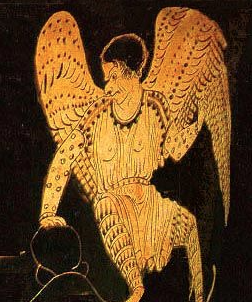Smokers show fewer symptoms or appear less affected by certain toxins
Some smokers show fewer symptoms or appear less affected by certain toxins — arsenic included — at doses that harm nonsmokers. This isn’t protection in the traditional sense. It’s more like biochemical compensation or adaptive masking. 🔄 Possible Mechanisms Behind the Paradox Induced Deto
Snake venom can have significant effects on fat distribution and adipose tissue
Stimulation of adipose tissue cells: Bothrops moojeni snake venom (Bmv) has been shown to stimulate preadipocytes, which are precursor cells to fat cells. This stimulation leads to the release of inflammatory mediators such as PGE2, IL-6, and KC/IL-8. Increased lipid accumulation: Bmv has been obser
The term “hormesis” derives from Greek hórmēsis for “rapid motion, eagerness”, itself from ancient Greek hormáein to excite. The same Greek root provides the word hormone.
Hormesis is a two-phased dose-response relationship to an environmental agent whereby low-dose amounts have a beneficial effect and high-dose amounts are either inhibitory to function or toxic. Within the hormetic zone, the biological response to low-dose amounts of some stressors is generall
p-Phenylenediamine (PPD) is a derivative of aniline used in kevlar, hair dye and henna substitutions among other things, the derivatives of which are used in antiozonants among other horrors
p-Phenylenediamine (PPD) is an organic compound with the formula C6H4(NH2)2. This derivative of aniline is a white solid, but samples can darken due to air oxidation.It is mainly used as a component of engineering polymers and composites like kevlar. It is also an ingredient in hair dyes a
Humans have been interested in echinoid fossils (the fossilised remains of sea urchins) for millennia, considering them lucky and imbuing them with magical powers linked to their deities
A folk tradition in Denmark and southern England imagined sea urchin fossils to be thunderbolts, able to ward off harm by lightning or by witchcraft, as an apotropaic symbol. Another version supposed they were petrified eggs of snakes, able to protect against heart and liver disease, poisons, an
Von Willebrand factor (VWF) is a large multimeric glycoprotein present in blood plasma and produced constitutively as ultra-large VWF in endothelium (in the Weibel–Palade bodies), megakaryocytes (α-granules of platelets), and subendothelial connective tissue
Von Willebrand factor (VWF) is a blood glycoprotein that promotes hemostasis, specifically, platelet adhesion. It is deficient and/or defective in von Willebrand disease and is involved in many other diseases, including thrombotic thrombocytopenic pu
Juvenile hormone (and Methoprene)
Juvenile hormones (JHs) are a group of acyclic sesquiterpenoids that regulate many aspects of insect physiology. The first discovery of a JH was by Vincent Wigglesworth. JHs regulate development, reproduction, diapause, and polyphenisms. The chemical formula for juvenile hormone is C18H30O3.
The birds and the bees and the blister beetles
What on earth?
Cyanamide notes (it was a polio vaccine that spurred these notes and by now polio has five mentions on the page and these are two of them)
I’m going to add some polio vaccine stuff at the top of these notes. Hilary Koprowski is the one mentioned on the Polio Hall of Fame page who was not included in the hideous monument, see What In God’s Name, even though he (and his work) have direct connection to those who are included.
Riboflavin and its breakdown products interact with DNA, making this system attractive in the photodisinfection of blood and blood products
The application of photosensitisers to tropical pathogens in the blood supply Mark Wainwright PhD, Mauricio S. Baptista, in Photodiagnosis and Photodynamic Therapy, 2011 Riboflavin As vitamin B2, riboflavin (Fig. 5) is an essential nutrient in humans. The Mirasol system
In Chinese alchemy, elixir poisoning refers to the toxic effects from elixirs of immortality that contained metals and minerals such as mercury and arsenic
In Chinese alchemy, elixir poisoning refers to the toxic effects from elixirs of immortality that contained metals and minerals such as mercury and arsenic. The official Twenty-Four Histories record numerous Chinese emperors, nobles, and&nb
Cold-Food Powder or Five Minerals Powder, poisonous psychoactive drug popular during the Six Dynasties (220–589) and Tang dynasty (618–907)
Cold-Food Powder (Chinese: 寒食散; pinyin: hánshísǎn; Wade–Giles: han-shih-san) or Five Minerals Powder (Chinese: 五石散; pinyin: wǔshísǎn; Wade–Giles: wu-shih-san) was a poisonous psychoactive drug popular du
Halāhala or kālakūṭa poison
Halāhala (Sanskrit हलाहल) or kālakūṭa (Sanskrit कालकूटं, literally: ‘black mass’ or ‘time puzzle’[1]) is the name of a poison in Hindu mythology. It was created from the Ocean of Milk when the devas and the asuras churned it (see Samu
Amygdalin and Laetrile
Amygdalin (from Ancient Greek: ἀμυγδαλή amygdalē “almond”) is a naturally occurring chemical compound found in many plants, most notably in the seeds (kernels) of apricots, bitter almonds, apples, peaches, cherries&nbs
Keres, bloodthirsty death spirits in Greek Mythology
In Greek mythology, the Keres (/ˈkɪriːz/; Ancient Greek: Κῆρες), singular Ker (/ˈkɜr/; Κήρ), were female death-spirits. They were the goddesses who personified violent death and who were drawn to bloody deaths on battlefields. Although they were present during death and dying, t
Charonium at Aornum
Aornum was an oracle in Ancient Greece, located in Thesprotia in a cave called Charonium (Χαρώνειον ἄντρον or χάσμα) which gave forth poisonous vapours. The name of the cave, “Charon‘s Cave”, reflects the belief that it was an











